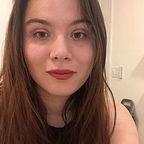Missing and Murdered Indigenous Women: Awareness and Healing Through Art
In June 2019, Canada’s National Inquiry into Missing and Murdered Indigenous Women and Girls (MMIWG) wrapped up a ten-year long investigation, labeling the horrible treatment — rapes, murders, and disappearances — of Indigenous women a “genocide” (“Final Report” 2019). For this case study assignment, I will review two examples of art-related projects that have attempted to bring awareness to MMIWG and healing to Indigenous communities in Canada.
As part of the inquiry itself, Indigenous politicians and activists gathered artwork, ranging from songs to sculptures, from Indigenous peoples who have lost women due to colonial violence. One of these pieces of art is a heart puzzle, created by Indigenous women at the 1st Annual Sister in Strength Wellness Retreat, who were “given a puzzle piece to create a memorial to their loved ones” (Sisters in Strength 2019). The collage is supposed to “represent the broken hearts of MMIWG families” (Sisters in Strength 2019). The names of the creators of this puzzle are not published, and it is one of the many art pieces by Indigenous people on Canada’s MMIWG website that illustrates the trauma and the heartbreak that Indigenous communities have gone through.
Another piece of art that I found powerful relating to MMIWG was the April 2018 music video for the song “Powerless” by Classified, who is not First Nation, Métis, or Inuit. The song explores the gendered violence that many Indigenous women experience; the video shows real missing posters of Indigenous women and features imagery of red dresses, which have become a symbol of MMIWG. According to a MUCH article, the video draws “from the 2016 case of Christopher Butt […] who was sentenced to five years in prison for raping an 11-year-old girl” (Bowsher 2018). Reactions from Indigenous communities to the song were generally positive, and Classified said he wanted to bring attention to the gendered and sexualized violence that Indigenous women face after many conversations with survivors (McMillan 2018)
Bibliography:
Bowsher, Allison. “Classified Drops ‘Powerless’ Video In Support Of Canadian Indigenous Women.” Much.com, 5 Apr. 2018, www.much.com/classified-video-powerless-indigenous-women/.
“Final Report.” National Inquiry into Missing and Murdered Indigenous Women and Girls, 29 May 2019, www.mmiwg-ffada.ca/final-report/.
McMillan , Elizabeth. “The Unsettling Real-Life Confrontation That Begins Classified’s Song about Abuse | CBC News.” CBCnews, CBC/Radio Canada, 17 May 2018, www.cbc.ca/news/canada/nova-scotia/classified-powerless-inspired-by-sexual-abuse-stories-1.4653862.
Sisters in Strength. “Heart Puzzle Collage.” National Inquiry into Missing and Murdered Indigenous Women and Girls , 8 Apr. 2019, www.mmiwg-ffada.ca/artists/heart-puzzle-collage/.
